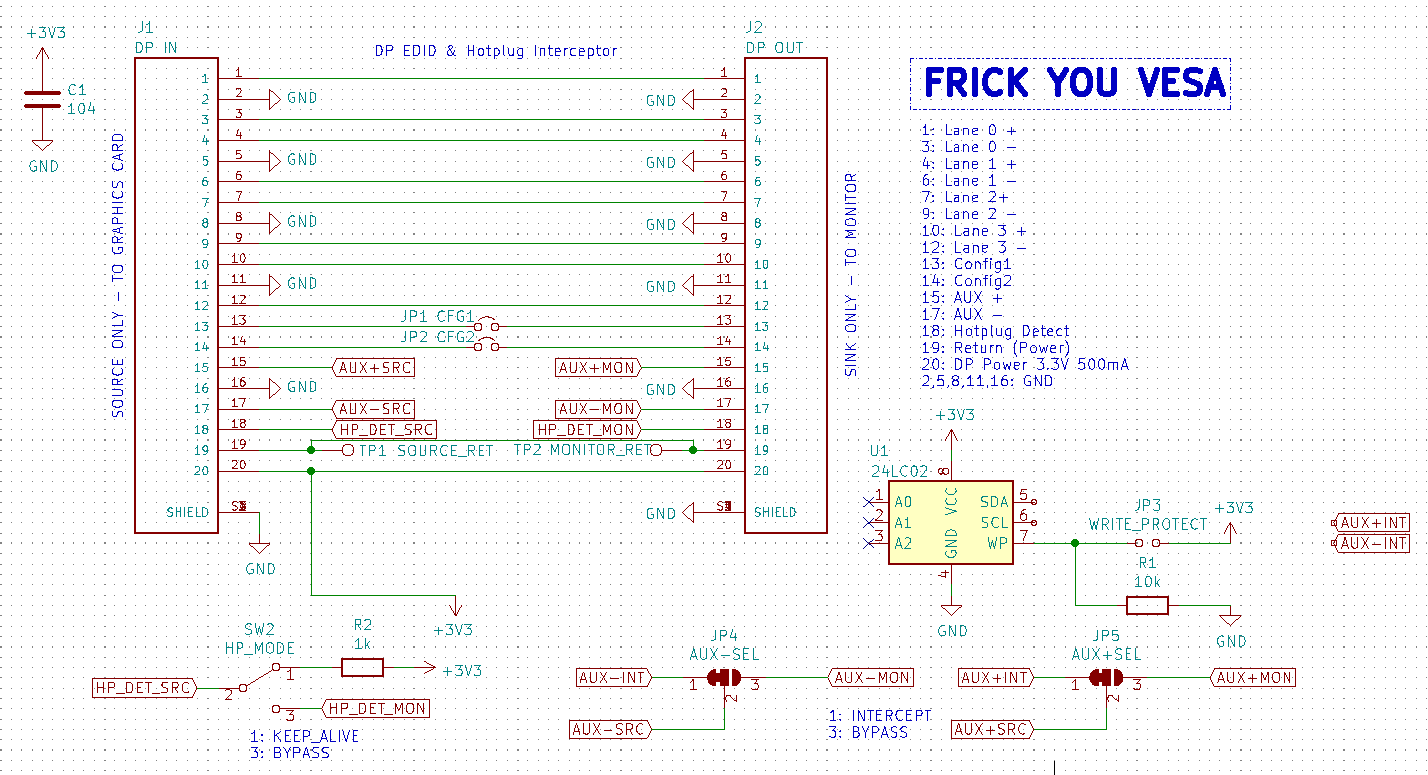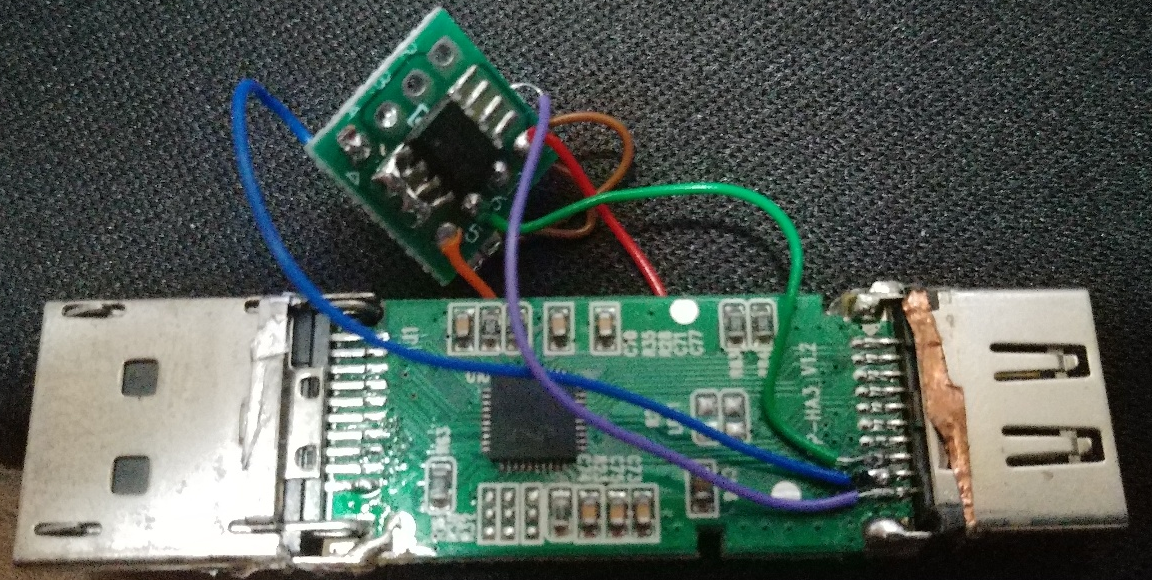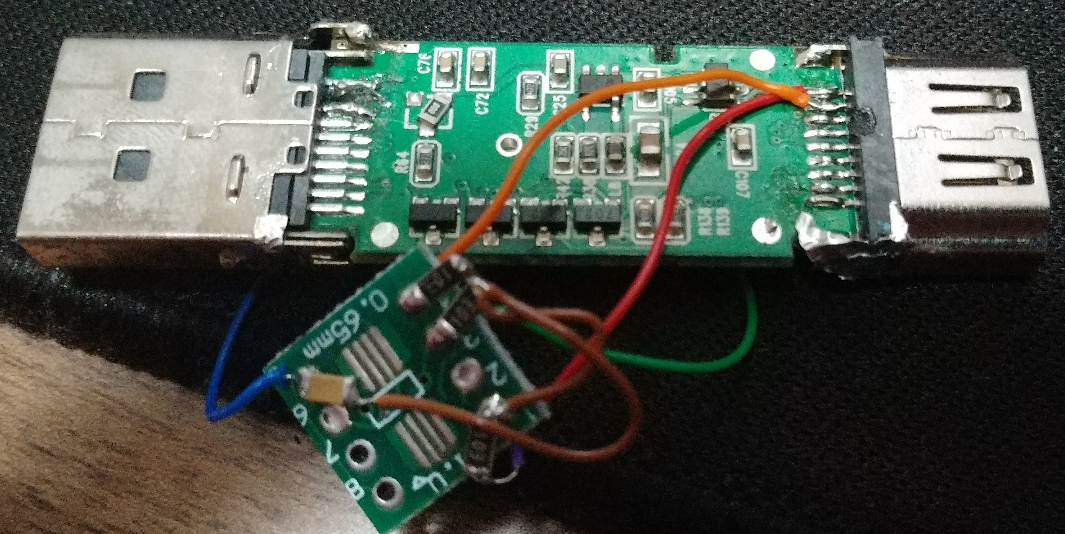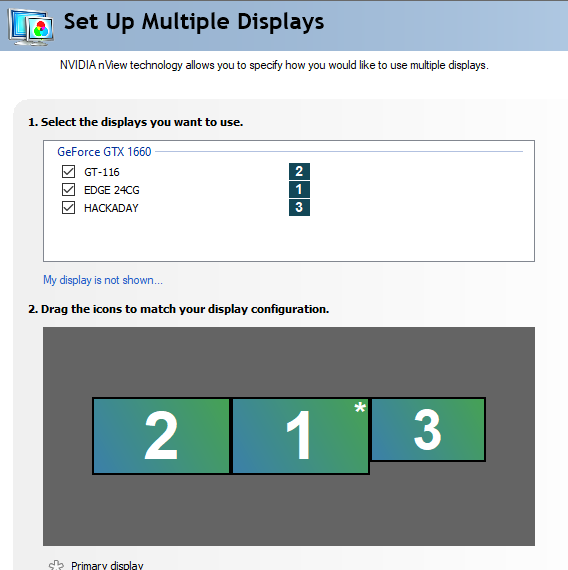I recovered the project file from my drive and made some changes to it.

The question is, which wire goes where? I won't know for sure until the dummy plug arrives, but the AUX line is definitely used for this purpose. I even created an EDID data for this purpose (that contains a special string so I know for sure it is the right one)
00 FF FF FF FF FF FF 00 20 24 37 13 39 05 00 00 17 1F 01 04 A5 34 1E 78 3B DC F1 A6 55 51 9D 26 0E 50 54 AF CF 00 81 C0 81 40 81 80 81 00 95 00 A9 40 B3 00 A9 C0 FE 5B 80 A0 70 38 35 40 30 20 35 00 09 25 21 00 00 1E FB 7E 80 88 70 38 12 40 18 20 35 00 09 25 21 00 00 1E 00 00 00 FD 00 64 90 B4 B4 21 01 0A 20 20 20 20 20 20 00 00 00 FC 00 48 41 43 4B 41 44 41 59 0A 20 20 20 20 01 4C 00 00 00 00 00 00 00 00 00 00 00 00 00 00 00 00 00 00 00 00 00 00 00 00 00 00 00 00 00 00 00 00 00 00 00 00 00 00 00 00 00 00 00 00 00 00 00 00 00 00 00 00 00 00 00 00 00 00 00 00 00 00 00 00 00 00 00 00 00 00 00 00 00 00 00 00 00 00 00 00 00 00 00 00 00 00 00 00 00 00 00 00 00 00 00 00 00 00 00 00 00 00 00 00 00 00 00 00 00 00 00 00 00 00 00 00 00 00 00 00 00 00 00 00 00 00 00 00
Here's hoping that the plug doesn't get stuck in the shipping process because I want this to be solved as soon as possible.
Current plan:
- Acquire a DP dummy plug
- Take it apart
- Copy its EDID supplicant circuit
- Write something to extract info from the registry (if desired, Linux users will have this easy)
- Make sure the chip can be reprogrammed
- Open-source the entire thing
Update: Attaching the EEPROM directly to the AUX line does not work. I'd be pretty shocked if I find out that the plug, which costs $4, is just a DisplayPort-to-HDMI plug permanently wired to a regular HDMI dummy plug. Hoo boy, if that's the case I'll have a gosh-darned field month reverse-engineering the thing... Let me check if it's possible to acquire the chips used in those dongles just in case.
So far the solution seems to be:

What will fit into the "Some Magical Component" remains to be seen...
But I did get a partial success:



I'm just hoping that this is NOT how those dummy display plugs work, else I'm screwed.
But for now, [Telstra Music-on-Hold - Whistling]
 Torbjörn Lindholm
Torbjörn Lindholm
Discussions
Become a Hackaday.io Member
Create an account to leave a comment. Already have an account? Log In.